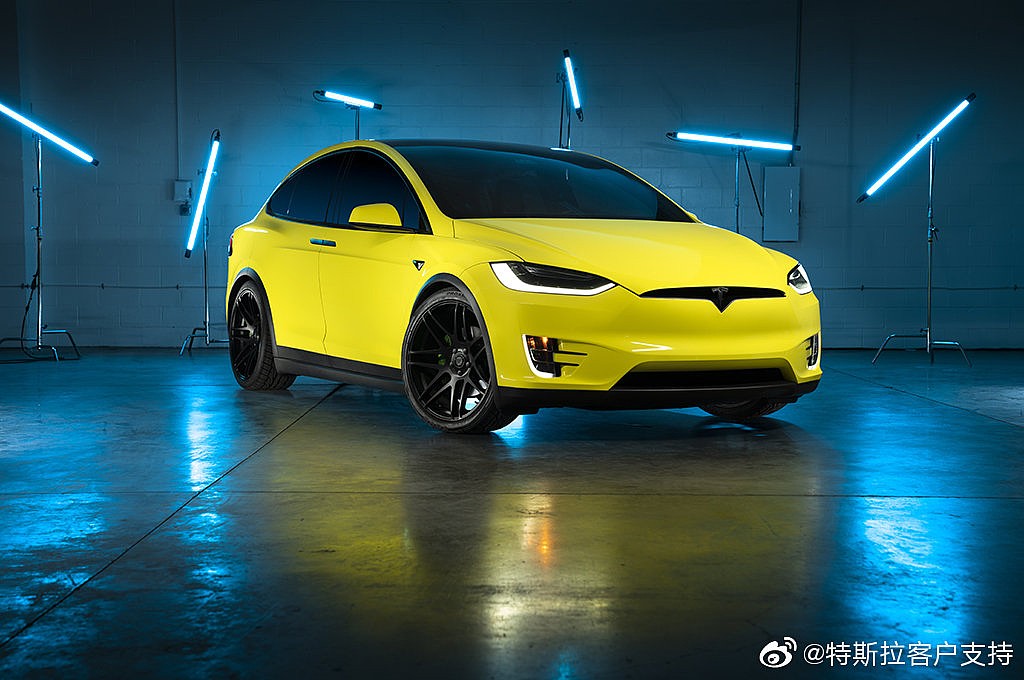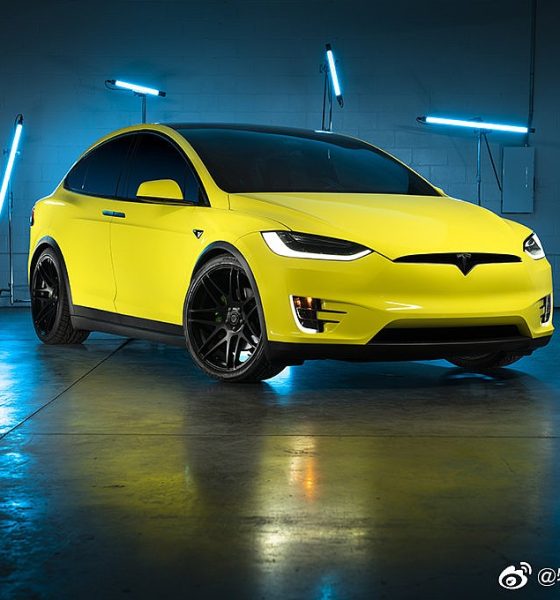

News
Tesla encourages customization in China with wrapping service launch
Tesla has launched an in-house car wrap service at some of the company’s delivery centers in at least five Chinese cities. The service will be available for all cars across the company’s fleet in China.
A post from Tesla’s Customer Service page on Weibo stated that the company would launch a custom wrap program in Beijing, Shanghai, Guangzhou, Shenzhen, Suzhou, and other cities in mid-August.

The translated post states:
“Tesla is more and more common on the road, and it is getting easier to recognize the wrong car at the charging station
How to make your Tesla different and stand out?
Now the Tesla Delivery Center has launched the [Color Changed Car Jacket] product, which can make the vehicle cool!
The first batch of online cities: Beijing, Shanghai, Guangzhou, Shenzhen, Suzhou, and other cities will be launched in mid-August!
Many available colors, please contact your local delivery or service center!
Note: Due to the requirements of the relevant departments, you need to report to the local vehicle management office within ten days after the color change car jacket is installed.”
The addition of a wrap service for Tesla buyers will increase the customization of the company’s vehicles, allowing owners to choose any color or pattern of their choosing instead of the five traditional colors that the automaker has offered for several years now.
The speculation on wrapping Tesla’s through the company itself and not through a third-party supplier started in April when company CEO Elon Musk announced that the Cybertruck would be available for wrapping in any pattern or color.
Initially, the Cybertruck was thought to only be available in its stainless-steel silver, which is the natural color of the vehicle’s exoskeleton. However, Musk stated that the customization would allow the owner to have full reign on the design and look of their all-electric truck.
Expanding the service to Tesla’s other vehicles is advantageous for owners not only because of customization options but also because the wraps will protect a vehicle’s paint, which has been a weak point of the company in the past.
Additionally, Tesla offering the wraps in-house could bode well for the company’s business. Wraps are a popular form of customization within the community, but purchasing and having them installed from a third party supplier is expensive. For smaller vehicles like the Model 3, $4,000 is a standard price for a full wrap. Meanwhile, larger cars like Tesla’s Model X can cost an additional $1,000 or more.
It is not known how much Tesla will charge for the wrapping service at this time.
Tesla could have a distinct advantage over other car companies in China that only offer paint for their vehicles. The increased customization options could be a critical factor in a car buyer’s decision to purchase a particular vehicle, as colors and patterns usually reflect a driver’s personality or perceived style.
If Tesla can expand this service to other areas like the United States and Europe, it could increase the growth of the company even further as cosmetic options and sustainability are two advantages that many car buyers may consider when purchasing a new car.

News
Tesla FSD fleet is nearing 7 billion total miles, including 2.5 billion city miles
As can be seen on Tesla’s official FSD webpage, vehicles equipped with the system have now navigated over 6.99 billion miles.

Tesla’s Full Self-Driving (Supervised) fleet is closing in on almost 7 billion total miles driven, as per data posted by the company on its official FSD webpage.
These figures hint at the massive scale of data fueling Tesla’s rapid FSD improvements, which have been quite notable as of late.
FSD mileage milestones
As can be seen on Tesla’s official FSD webpage, vehicles equipped with the system have now navigated over 6.99 billion miles. Tesla owner and avid FSD tester Whole Mars Catalog also shared a screenshot indicating that from the nearly 7 billion miles traveled by the FSD fleet, more than 2.5 billion miles were driven inside cities.
City miles are particularly valuable for complex urban scenarios like unprotected turns, pedestrian interactions, and traffic lights. This is also the difference-maker for FSD, as only complex solutions, such as Waymo’s self-driving taxis, operate similarly on inner-city streets. And even then, incidents such as the San Francisco blackouts have proven challenging for sensor-rich vehicles like Waymos.
Tesla’s data edge
Tesla has a number of advantages in the autonomous vehicle sector, one of which is the size of its fleet and the number of vehicles training FSD on real-world roads. Tesla’s nearly 7 billion FSD miles then allow the company to roll out updates that make its vehicles behave like they are being driven by experienced drivers, even if they are operating on their own.
So notable are Tesla’s improvements to FSD that NVIDIA Director of Robotics Jim Fan, after experiencing FSD v14, noted that the system is the first AI that passes what he described as a “Physical Turing Test.”
“Despite knowing exactly how robot learning works, I still find it magical watching the steering wheel turn by itself. First it feels surreal, next it becomes routine. Then, like the smartphone, taking it away actively hurts. This is how humanity gets rewired and glued to god-like technologies,” Fan wrote in a post on X.
News
Tesla starts showing how FSD will change lives in Europe
Local officials tested the system on narrow country roads and were impressed by FSD’s smooth, human-like driving, with some calling the service a game-changer for everyday life in areas that are far from urban centers.

Tesla has launched Europe’s first public shuttle service using Full Self-Driving (Supervised) in the rural Eifelkreis Bitburg-Prüm region of Germany, demonstrating how the technology can restore independence and mobility for people who struggle with limited transport options.
Local officials tested the system on narrow country roads and were impressed by FSD’s smooth, human-like driving, with some calling the service a game-changer for everyday life in areas that are far from urban centers.
Officials see real impact on rural residents
Arzfeld Mayor Johannes Kuhl and District Administrator Andreas Kruppert personally tested the Tesla shuttle service. This allowed them to see just how well FSD navigated winding lanes and rural roads confidently. Kruppert said, “Autonomous driving sounds like science fiction to many, but we simply see here that it works totally well in rural regions too.” Kuhl, for his part, also noted that FSD “feels like a very experienced driver.”
The pilot complements the area’s “Citizen Bus” program, which provides on-demand rides for elderly residents who can no longer drive themselves. Tesla Europe shared a video of a demonstration of the service, highlighting how FSD gives people their freedom back, even in places where public transport is not as prevalent.
What the Ministry for Economic Affairs and Transport says
Rhineland-Palatinate’s Minister Daniela Schmitt supported the project, praising the collaboration that made this “first of its kind in Europe” possible. As per the ministry, the rural rollout for the service shows FSD’s potential beyond major cities, and it delivers tangible benefits like grocery runs, doctor visits, and social connections for isolated residents.
“Reliable and flexible mobility is especially vital in rural areas. With the launch of a shuttle service using self-driving vehicles (FSD supervised) by Tesla in the Eifelkreis Bitburg-Prüm, an innovative pilot project is now getting underway that complements local community bus services. It is the first project of its kind in Europe.
“The result is a real gain for rural mobility: greater accessibility, more flexibility and tangible benefits for everyday life. A strong signal for innovation, cooperation and future-oriented mobility beyond urban centers,” the ministry wrote in a LinkedIn post.
News
Tesla China quietly posts Robotaxi-related job listing
Tesla China is currently seeking a Low Voltage Electrical Engineer to work on circuit board design for the company’s autonomous vehicles.

Tesla has posted a new job listing in Shanghai explicitly tied to its Robotaxi program, fueling speculation that the company is preparing to launch its dedicated autonomous ride-hailing service in China.
As noted in the listing, Tesla China is currently seeking a Low Voltage Electrical Engineer to work on circuit board design for the company’s autonomous vehicles.
Robotaxi-specific role
The listing, which was shared on social media platform X by industry watcher @tslaming, suggested that Tesla China is looking to fill the role urgently. The job listing itself specifically mentions that the person hired for the role will be working on the Low Voltage Hardware team, which would design the circuit boards that would serve as the nervous system of the Robotaxi.
Key tasks for the role, as indicated in the job listing, include collaboration with PCB layout, firmware, mechanical, program management, and validation teams, among other responsibilities. The role is based in Shanghai.
China Robotaxi launch
China represents a massive potential market for robotaxis, with its dense urban centers and supportive policies in select cities. Tesla has limited permission to roll out FSD in the country, though despite this, its vehicles have been hailed as among the best in the market when it comes to autonomous features. So far, at least, it appears that China supports Tesla’s FSD and Robotaxi rollout.
This was hinted at in November, when Tesla brought the Cybercab to the 8th China International Import Expo (CIIE) in Shanghai, marking the first time that the autonomous two-seater was brought to the Asia-Pacific region. The vehicle, despite not having a release date in China, received a significant amount of interest among the event’s attendees.








